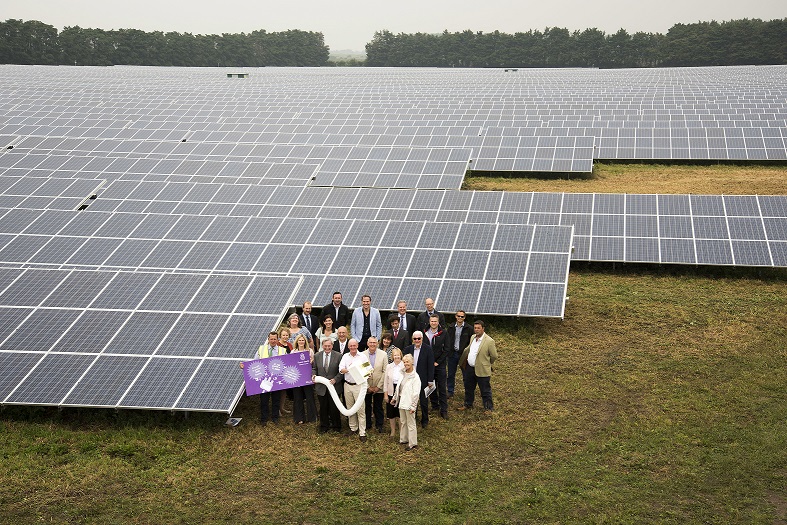
Only one new community energy company was set up in 2017 as evidence continues to mount of “a wholesale decline” in the number of new organisations and projects since cuts to support for these initiatives began in 2015.
These were the findings of the 'State of the Sector Report', an annual review of community energy in England, Wales and Northern Ireland compiled by the UK’s leading organisations in the sector.
Since proposed cuts to the feed-in tariff (FiT) were put forward in 2015, widespread damage to the renewables sector has been felt by the communities sector, with financial margins slashed for new generation projects.
Over half (55%) of the community groups surveyed for the report said the greatest barrier in 2017 has been the reduction of subsidy support, in particular the feed-in tariff.
Similarly, the report states that the removal of pre-registration for new rooftop solar schemes has increased risk for many proposed projects, while the removal of several tax incentives has also made larger, higher risk projects less attractive to potential funders and investors.
The first State of the Sector report covering 2016 found that these policy changes had made it “extremely challenging” and with no major changes and “little in the way of new support mechanisms”, the latest report found that limited growth and fewer project successes had taken place in the last year.
From a steady increase in the number of new organisations in recent years, peaking at 30 new additions to the sector in 2014/15, the decline that saw just 13 formed last year has now reached rock bottom with just one new community energy organisation identified as having founded in 2017.
The report points to the decreasing viability of energy projects as the reason behind this decline, which it says has stunted communities’ enthusiasm and motivation to investigate energy projects. This is particularly the case for those without an existing project, as the barriers to entry are “considerably greater” for these groups.
Just 16 new projects were identified in 2017, with the combined electricity generation capacity across England, Wales and Northern Ireland standing at 168MW, with Scotland adding an estimated 81MW to this capacity.
For the UK countries south of the border, there has been an increase of 47MW on last year’s report and includes 33.5MW of new generation capacity installed or acquired in 2017.
However, this added capacity was down to a series of existing projects being brought into community ownership, rather than new renewable generation being built.
This includes the purchase of a 14.7MW solar PV installation in Wiltshire by Heart of England Community Energy (HECE), in partnership with Mongoose Energy and renewable energy developer, Anesco.
Similarly a 5MW solar farm was also purchased by a Devon based community, Yealm Community Energy, as part of the Power to Change Community-owned Renewable Energy Partners (CORE) project, which will seek to purchase up to eight more solar farms in the next 12 months.
Following deals such as these, solar PV remains the most prevalent generation technology within the community energy sector
A further 35 projects were identified as in-development, including 3.4MW of solar PV, with 21 groups expected to submit planning applications in 2018. However, these were generally found to be additional projects being developed by communities with existing generation capacity, suggesting the barriers to entry for new groups will remain.
In a joint statement, Emma Bridge, chief executive of Community Energy England, and Robert Proctor, business development manager for Community Energy Wales, said: “Community energy has faced many changes to policy, regulation and finance over the last couple of years, and the model that delivered an incredible amount of community energy projects is now in question.”
This decline has also been reflected in the availability of development funding, which reached just £299,000 in 2017. Meanwhile, £13.3 million in project financing for renewable energy projects was reported as having been raised by community groups in 2017, with the lion’s share (£8.4 million) going to solar projects.
“It is clear that 2017 has seen a distinct reduction in the level of finance raised for community renewables in the UK. This can be attributed to reduced project viability due to decreased margins and increased risks and has resulted in fewer projects coming forward than in previous years,” the report states.
Over a third (37%) community energy groups have therefore called for the FiT to be reviewed, reinstated or replaced despite government assertions that tariffs will remain untouched. Meanwhile, a quarter requested a clearer government strategy to counteract the recent years in instability.
However, the report concludes that the slowdown in the sector is likely to continue in 2018 with little in the way of financial support or stability emerging.

